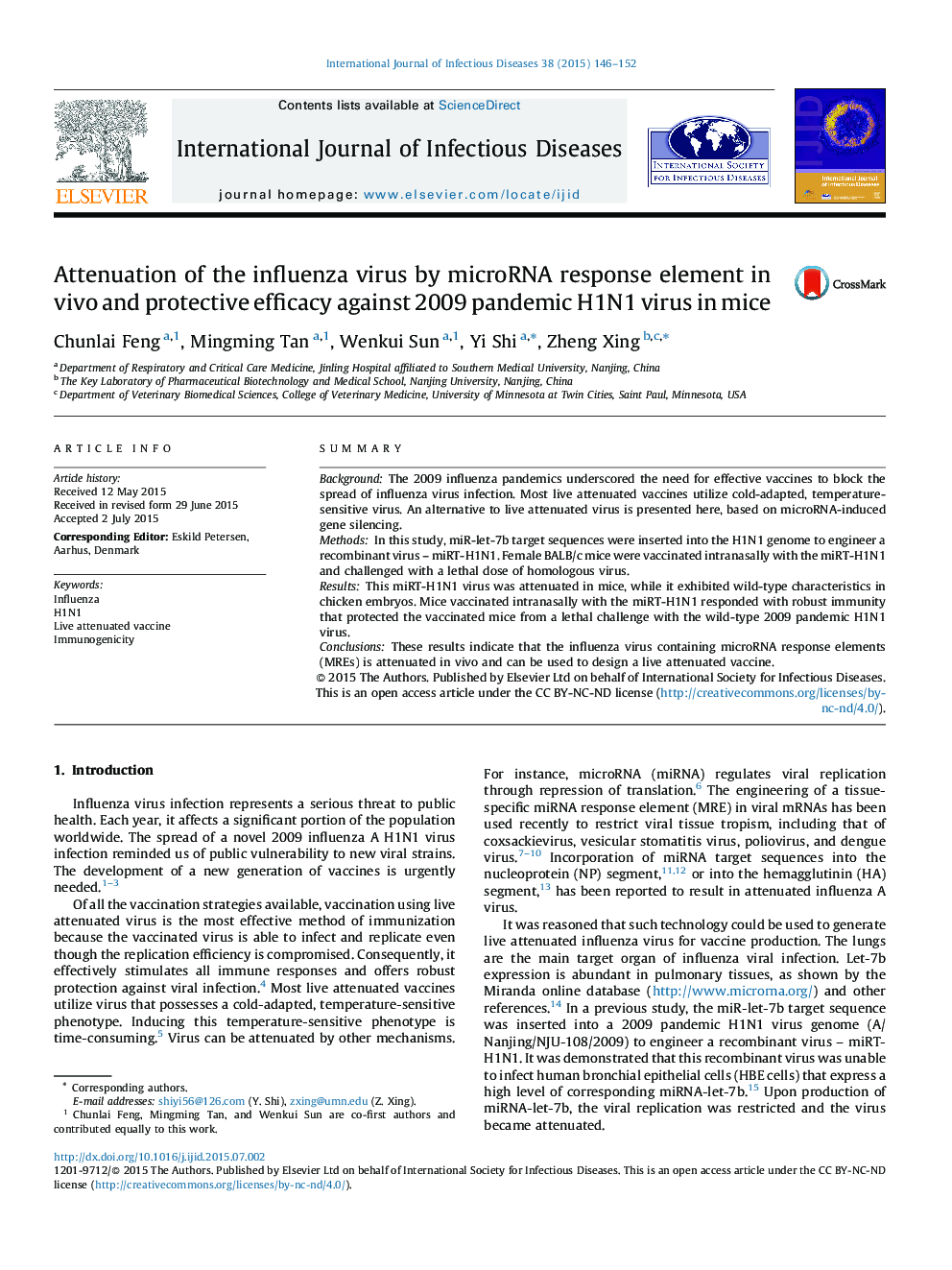| کد مقاله | کد نشریه | سال انتشار | مقاله انگلیسی | نسخه تمام متن |
|---|---|---|---|---|
| 3361999 | 1592057 | 2015 | 7 صفحه PDF | دانلود رایگان |

• miRT-H1N1 carrying miR-let-7b target sequences was generated.
• It was demonstrated that attenuation of miRT-H1N1 is let-7b-dependent in mice.
• Mice vaccinated intranasally with miRT-H1N1 responded with robust immunity.
• The miRT-H1N1 completely protected mice from infection with homologous H1N1 viruses.
• miRT-H1N1 can be used as a live attenuated vaccine.
SummaryBackgroundThe 2009 influenza pandemics underscored the need for effective vaccines to block the spread of influenza virus infection. Most live attenuated vaccines utilize cold-adapted, temperature-sensitive virus. An alternative to live attenuated virus is presented here, based on microRNA-induced gene silencing.MethodsIn this study, miR-let-7b target sequences were inserted into the H1N1 genome to engineer a recombinant virus – miRT-H1N1. Female BALB/c mice were vaccinated intranasally with the miRT-H1N1 and challenged with a lethal dose of homologous virus.ResultsThis miRT-H1N1 virus was attenuated in mice, while it exhibited wild-type characteristics in chicken embryos. Mice vaccinated intranasally with the miRT-H1N1 responded with robust immunity that protected the vaccinated mice from a lethal challenge with the wild-type 2009 pandemic H1N1 virus.ConclusionsThese results indicate that the influenza virus containing microRNA response elements (MREs) is attenuated in vivo and can be used to design a live attenuated vaccine.
Journal: International Journal of Infectious Diseases - Volume 38, September 2015, Pages 146–152